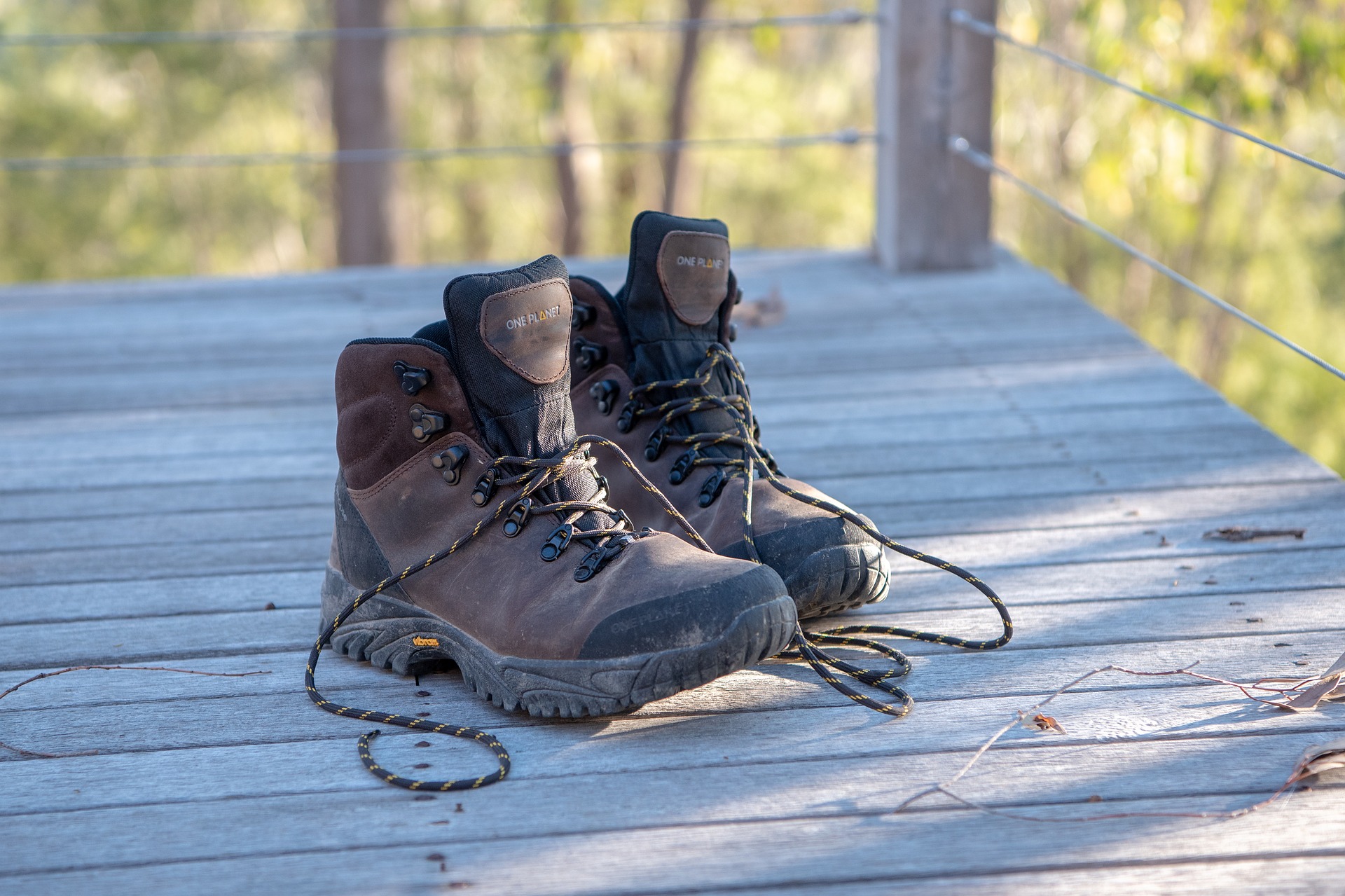Whether it be heading out for a day hike on well-groomed trails or hitting the Appalachian Trail for a few months, having the right hiking boots is crucial to your happiness and comfort. Arguably the most important component of hiking and backpacking, hiking boots provide cushioning, support and shock absorption. Many people find multi-purpose uses for their hiking boots as well (chopping wood for the winter, anyone?).
Now, wouldn’t it be nice if we could link you to the BEST hiking boot on the planet? The truth is that if you asked ten expert hikers and backpackers what their favorite hiking boot is, you’d get ten different answers. With countless styles, fits and footwear technologies, it can be quite overwhelming to select the best hiking boots for your needs. To help you select your perfect hiking boot, we’ve laid out hiking boot construction, fits and benefits for different styles so you can narrow down your choices. We’re confident that you’ll leave this article with the confidence you need to select the best hiking boots for your next adventure.
Before getting into the nitty gritty, remember these two points:
- Your hiking boots should match your ambitions. Unless you’ll be carrying 40+ pounds on your back for dozens of miles, a stiff, heavy-duty hiking boot with massive soles probably isn’t necessary.
- Your hiking boots should fit comfortably. Everyone’s feet are different. What feels comfortable to your friend might not be comfortable for you, so it’s crucial to try on a pair for yourself and walk around in them for a bit before purchasing.
Hiking Boot Styles
Hiking boots come in a variety of different styles. Each is intended for specific uses, so take into consideration where you’ll most likely be hiking, how long you’ll be hiking and what kind of load you’ll be carrying.
- Hiking Shoes – Fitting and feeling more like a sneaker, hiking shoes have flexible midsoles and are excellent for day hiking. With brands beefing up the durability of hiking shoes, some ultralight backpackers even use hiking shoes for long-distance journeys.
- Hiking Boots – Designed for shorter backpacking trips with light loads or day hikes, hiking boots are mid or high cut. Often made from suede or synthetics, they have a decent natural flex and don’t require much break in time. However, they lack the support and durability of stout backpacking boots.
- Backpacking Hiking Boots – Built to carry backpack loads of varying weights on longer trips deep into the backcountry, backpacking hiking boots are durable, supportive and have stiffer midsoles than lighter hiking boots. Backpacking boots are popular on and off the trail.
- Mountaineering Hiking Boots – Taller, stiffer and usually inserted, mountaineering boots are designed for mountain climbers who will be moving across rugged terrain. They are typically made from leather, plastic or synthetics such as Kevlar. The extra height and stiffness helps climbers traverse across steep and uneven terrain. Mountaineering boots are usually designed for use with crampons.
Hiking Boot Cuts
Just like the varying boot styles, each cut serves a different purpose when hiking.
- Low-Cut – A good choice for lighter loads on maintained trails, low cut hiking boots or shoes provide less roll-resistance for ankles and leave feet more vulnerable to debris invasion from scree, grit, sand or mud.
- Mid-Cut – A smart pick for shorter trips with moderate loads, mid-cut boots sit right between sneakers and tall hiking boots. They provide added ankle support and protection from debris.
- High-Cut – Perfect for carrying 40+ pound loads or hiking off trails, high-cut boots are the burliest selection. They enhance balance and ankle support on irregular trails or terrain.
Hiking Boot Features
In addition to styles and cuts, hiking boots have a variety of other features that you should keep in mind. Here are some terms that you might come across during your search for the perfect pair:
- Upper – Upper materials impact a boot’s weight, breathability, durability and water resistance. Full-grain leather is supportive, durable and waterproof. A suede upper (sometimes combined with mesh) offers more flexibility and breathability, but is not as supportive as full-grain leather and does not offer waterproof properties. A one-piece upper will tend to be more waterproof than those with multiple seams.
- Midsole – The midsole is the layer between the outer tread of the shoe on the bottom (outsole) and the upper parts of your shoe or boot. The midsole determines the stiffness and can be made from a variety of materials. Offering a lighter weight, Compression-molded EVA (Ethyl Vinyl Acetate, a foam material) midsoles are made of expanded EVA. A more uniform density from heel to toe can be found with injection-molded EVA midsoles are made from melted pellets of EVA. Polyurethane (PU) midsoles are lightweight and offer cushioning, shock absorption, flexibility and durability. TPR (Thermoplastic Rubber, a combination of petroleum-based chemicals) midsoles offer lightweight durability and flexibility.
- Outsole – The outsole is the layer of the boot with direct contact with the ground. Generally constructed of rubber, outsoles offer traction when hiking over a variety of surfaces. Lugs or treads provide traction-giving bumps on the outsole. Deeper, thicker lugs are used on backpacking and mountaineering boots for top-notch traction. Widely spaced lugs disperse mud.
- Additional Features – GORE-TEX® provides waterproofness and breathability and is sometimes used in linings of hiking boots. Shanks offer additional support and stiffness, and they are generally incorporated into the midsole. Gusseted (or connected) tongues help to keep out debris, water and dirt. Padded collars offer additional comfort and support. Removable footbeds or insoles help provide comfort, cushioning and additional support while also providing the option to dry out the boot.
How Should Hiking Boots Fit?
How a boot fits is undoubtedly the most important factor in selecting a new pair of hiking boots. A good fit addresses these three dimensions of your foot:
- Length – Toes should wiggle easily inside the hiking boots.
- Width – Feet should not slide from side to side nor should they feel compressed on the sides.
- Volume – The bulk of your foot should fit securely inside the hiking boot. In other words, if the 9.5 fits in length but is too wide and the 9 causes your toes to scrunch in the front but fits perfect widthwise, then neither of these hiking boots are a good fit. Find another style and/or brand to try.
Whatever adventures are in store for you, be fully prepared by investing in a comfortable pair of hiking shoes that will hold up to anything. Browse our men’s hiking boots/shoes and women’s hiking boots/shoes to find the best pair of hiking boots for you. Happy trails!








